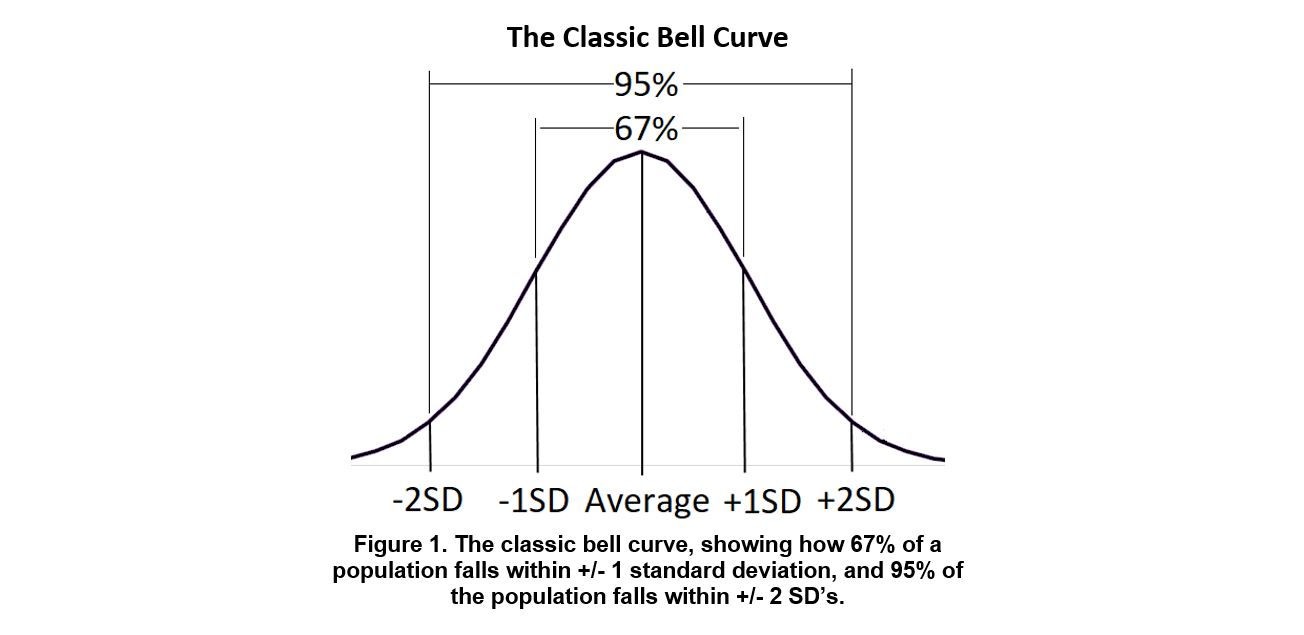Many shooters are aware of the importance of muzzle velocity variation, and measure the Extreme Spread (ES) and Standard Deviation (SD) of their muzzle velocity with a chronograph. What many shooters don’t realize is that the same shot-to-shot variation exists with Ballistic Coefficient (BC), and if that variation is too high, it can drive excessive vertical dispersion at long range. The Applied Ballistics article, Shot-to-Shot Variation in Muzzle Velocity and Ballistic Coefficient, goes into more detail on that subject. In this article, we discuss how this information ties into a standard Bell Curve and how this data helps you to predict ballistic capability.
Many of us have heard about the Bell Curve, but what does it mean, and how does it relate to Standard Deviation and Extreme Spread? The classic depiction below ties the bell curve together with it’s meaning as it pertains to muzzle velocity and BC variation.

The bell curve is actually showing a frequency distribution. In other words, how frequently certain numbers appear in relation to the average. For example, suppose the average in Figure 1 is a muzzle velocity of 3000 fps, and you measure an SD of 10 fps. The bell curve predicts that 67% of your shots will fall between 2990 fps (the average minus 1 SD), and 3010 fps (the average +1 SD). Furthermore, you can see that 95% of your shots should fall between 2980 fps (the average – 2 SD’s) and 3020 fps (the average +2 SD’s).
A Berger 6mm 109 grain Long Range Hybrid Target bullet shot with a 2980 fps muzzle velocity has a predicted drop of 878.57 inches at 1500 yards, while the same bullet with a 3020 fps muzzle velocity has a predicted drop of 849.12 inches at 1500 yards. That is almost a 30 inch difference!
It is easy to see why so many shooters aim for single digit SDs when hand loading. The same relationship between average and SD applies for any range of numbers that are normally distributed, which many of the variables in shooting are, so it’s worth learning the above information.
Typically, variation in the BC of bullets from shot-to-shot are normally distributed, so you can estimate the spread of BC’s in any group you can measure the SD of. Shots with BC’s very far from the average will be less likely than shots with BC’s closer to the average. The Extreme Spread (ES) is the range from the highest to lowest, and will drive the actual dispersion at long range. To see what this equates to when it comes to hit percentage on target, read our next article, BC Variation and Hit Percentage at Long Range.
Want a bullet that has both a high BC and a consistent BC? Learn more about our new Long Range Hybrid Target bullets.
